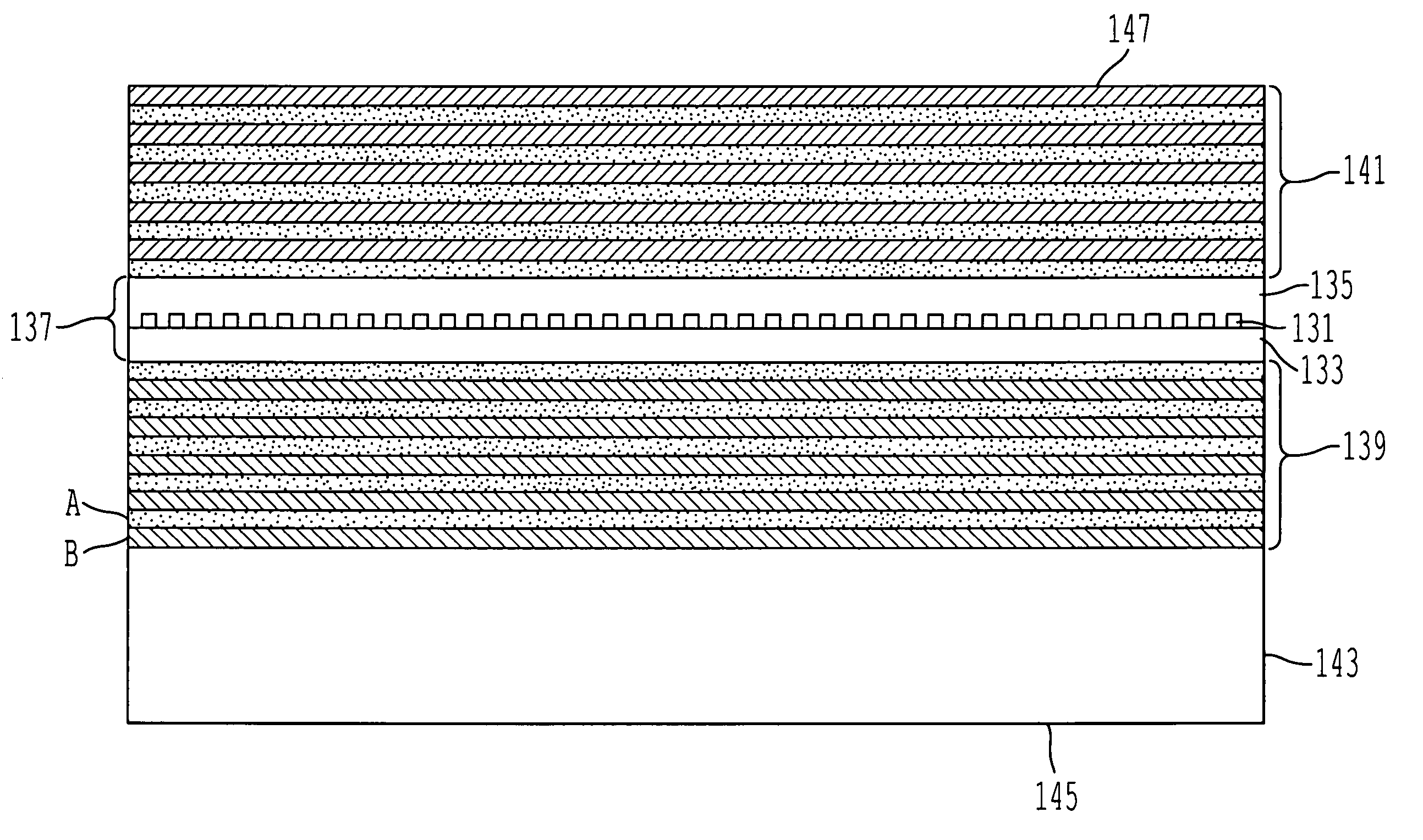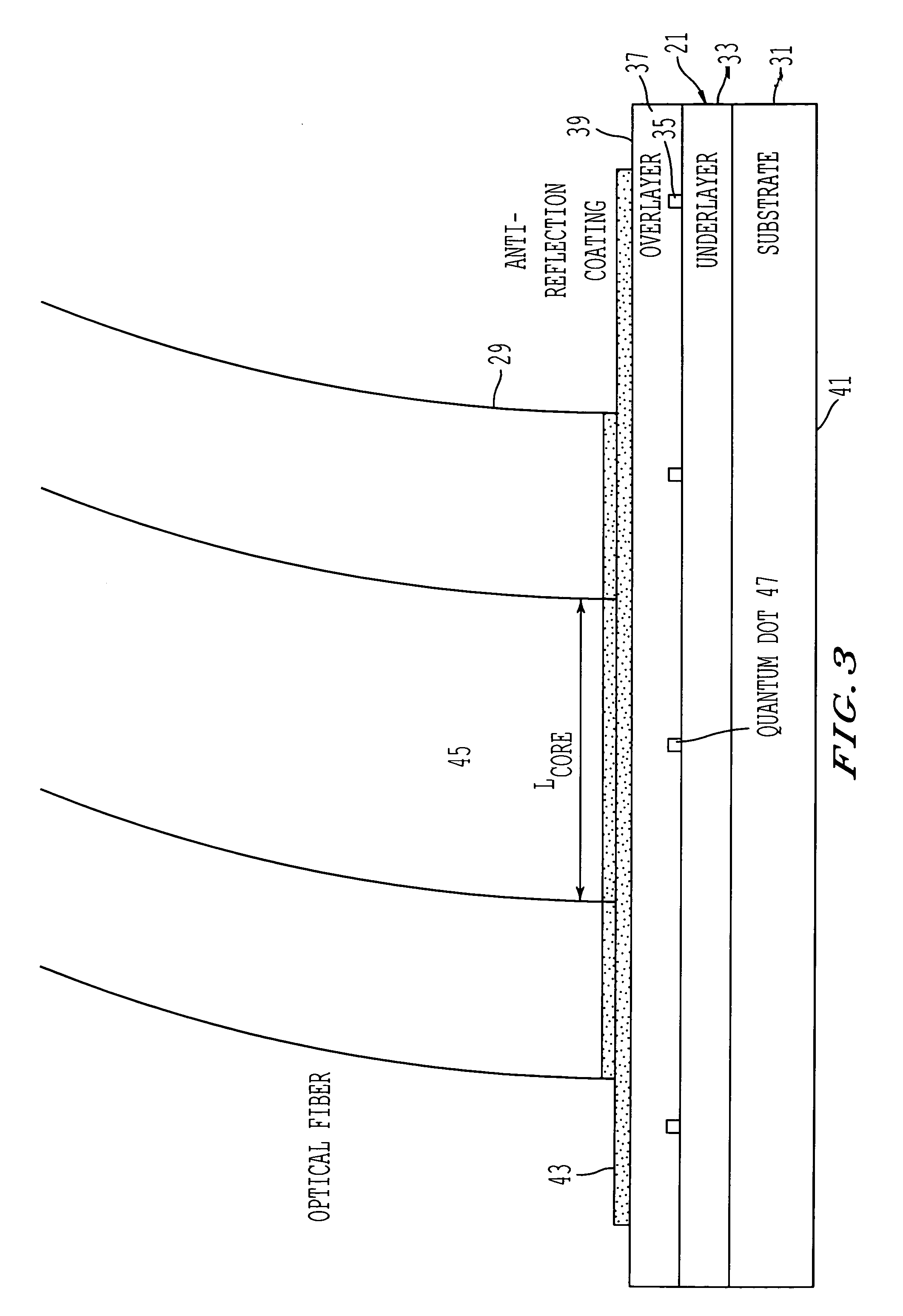Photon source
a photon source and source technology, applied in the field of photon sources, can solve the problems of small probability of finding two photons, random fluctuations in the photon emission rate of normal light sources, noise limitation of many optical techniques where single photons are detected, etc., and achieve the effect of maximising the radiative recombination ra
- Summary
- Abstract
- Description
- Claims
- Application Information
AI Technical Summary
Benefits of technology
Problems solved by technology
Method used
Image
Examples
Embodiment Construction
[0140]FIG. 1 shows a schematic band structure of a single quantum dot 1. The quantum dot forms a minimum in the conduction band 3 and a maximum in the valence band 5. A plurality of quantised conduction band levels 7 are formed in the minima 9 and a plurality of valence band levels 11 are formed in valence band maximum 13.
[0141]When a conduction band level 8 is populated by electron 15 and a valence band level 12 is populated by hole 17, the electron and hole recombine. Recombination of the single electron and a single hole results in the emission of a single photon.
[0142]The recombination of an electron and hole does not incur the instant that an electron and a hole populate the combined energy levels 7, 11. Instead, there is, on average, a finite delay between the population of the two levels and the emission of a photon. This is known as the “recombination time”. In a beam of conventional laser light, there are many photons. It is impossible using attenuation of a laser beam alon...
PUM
 Login to View More
Login to View More Abstract
Description
Claims
Application Information
 Login to View More
Login to View More - R&D
- Intellectual Property
- Life Sciences
- Materials
- Tech Scout
- Unparalleled Data Quality
- Higher Quality Content
- 60% Fewer Hallucinations
Browse by: Latest US Patents, China's latest patents, Technical Efficacy Thesaurus, Application Domain, Technology Topic, Popular Technical Reports.
© 2025 PatSnap. All rights reserved.Legal|Privacy policy|Modern Slavery Act Transparency Statement|Sitemap|About US| Contact US: help@patsnap.com



